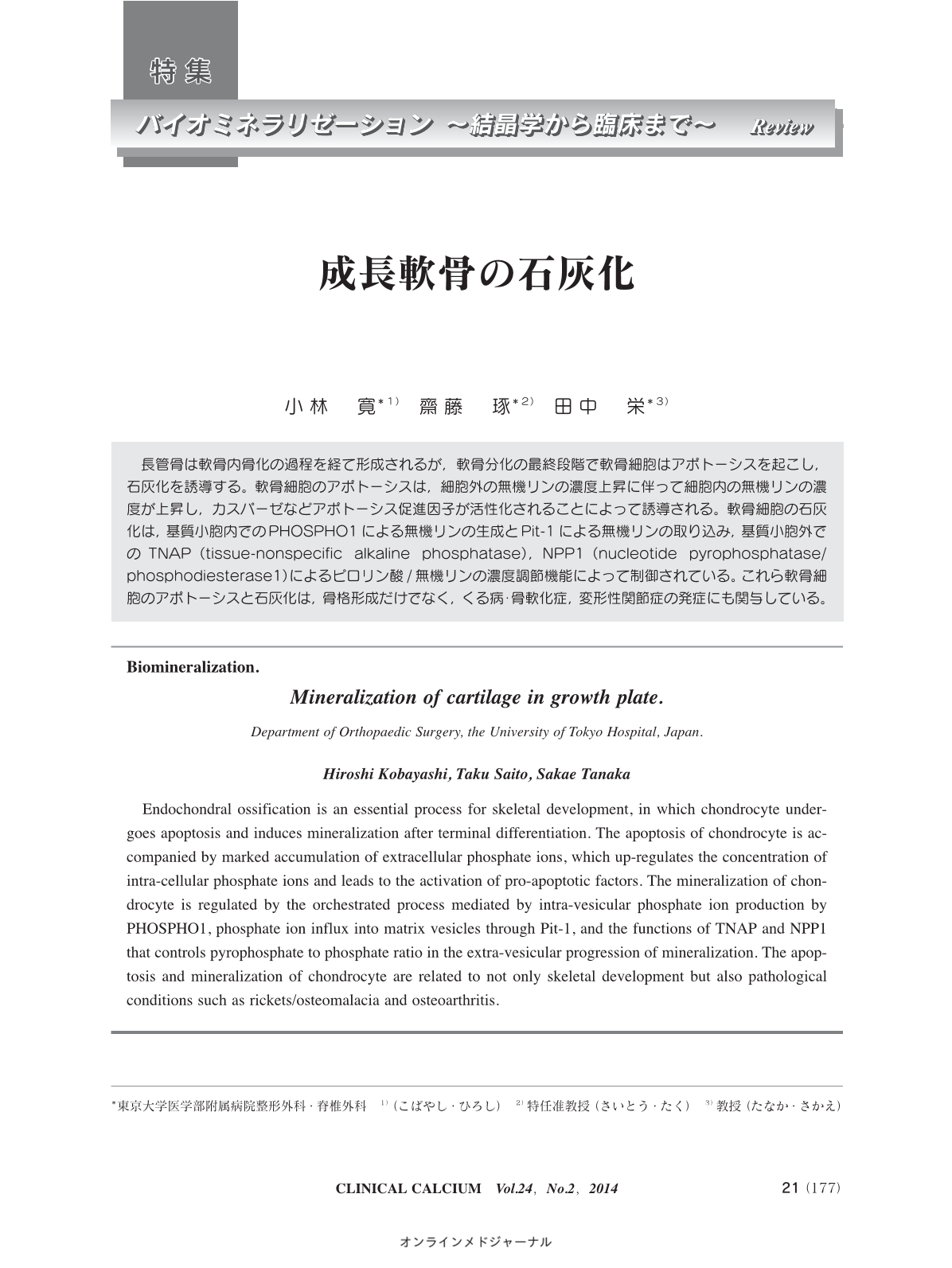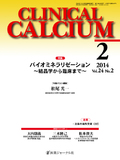Japanese
English
- 有料閲覧
- Abstract 文献概要
- 1ページ目 Look Inside
- 参考文献 Reference
長管骨は軟骨内骨化の過程を経て形成されるが,軟骨分化の最終段階で軟骨細胞はアポトーシスを起こし,石灰化を誘導する。軟骨細胞のアポトーシスは,細胞外の無機リンの濃度上昇に伴って細胞内の無機リンの濃度が上昇し,カスパーゼなどアポトーシス促進因子が活性化されることによって誘導される。軟骨細胞の石灰化は,基質小胞内でのPHOSPHO1による無機リンの生成とPit-1による無機リンの取り込み,基質小胞外でのTNAP(tissue-nonspecific alkaline phosphatase),NPP1(nucleotide pyrophosphatase/phosphodiesterase1)によるピロリン酸/無機リンの濃度調節機能によって制御されている。これら軟骨細胞のアポトーシスと石灰化は,骨格形成だけでなく,くる病・骨軟化症,変形性関節症の発症にも関与している。
Endochondral ossification is an essential process for skeletal development, in which chondrocyte undergoes apoptosis and induces mineralization after terminal differentiation. The apoptosis of chondrocyte is accompanied by marked accumulation of extracellular phosphate ions, which up-regulates the concentration of intra-cellular phosphate ions and leads to the activation of pro-apoptotic factors. The mineralization of chondrocyte is regulated by the orchestrated process mediated by intra-vesicular phosphate ion production by PHOSPHO1, phosphate ion influx into matrix vesicles through Pit-1, and the functions of TNAP and NPP1 that controls pyrophosphate to phosphate ratio in the extra-vesicular progression of mineralization. The apoptosis and mineralization of chondrocyte are related to not only skeletal development but also pathological conditions such as rickets/osteomalacia and osteoarthritis.



